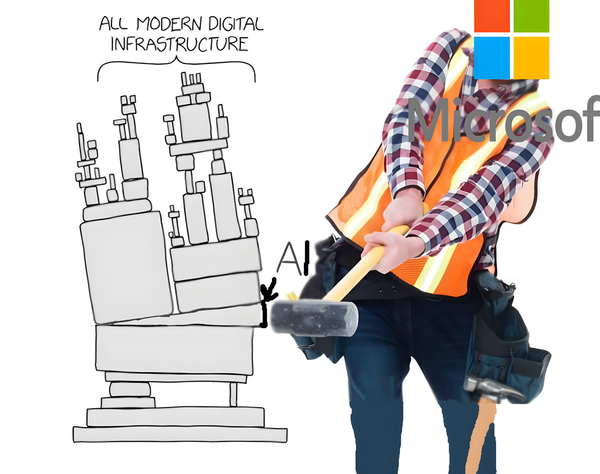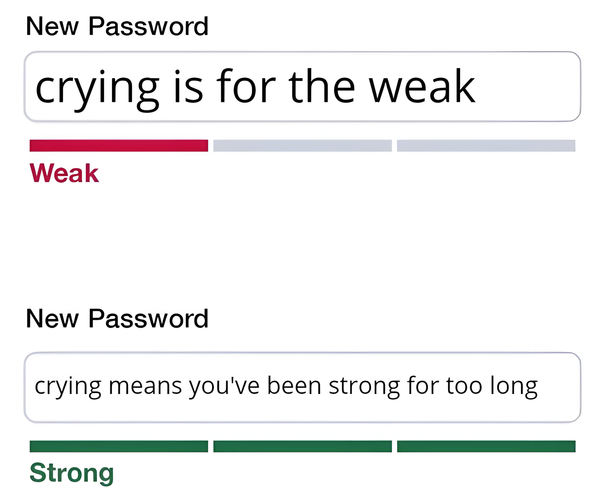The Managers' Guide № 124
Become a high-impact leader with actionable frameworks for team management. Learn to gain engineering buy-in, mediate conflict, handle complaints, and give feedback that builds trust — all through powerful, simple micro-habits.

The outages will continue until decentralisation improves.
Melody
People > Principles > Process > Product
- 🏗️ The Order Matters Most — The article presents a hierarchy for building great teams and products: People first, followed by Principles, then Process, and finally, the Product. Getting this sequence wrong is the root cause of many organizational problems.
- 🧑🤝🧑 It All Starts with People — The foundation of any successful venture is hiring the right people. This means prioritizing traits like humility, curiosity, and drive over pure skills alone. As the author states, “if you get the people part right, the rest has a way of working itself out”.
- 🧭 Principles Trump Process — Once you have the right people, you must equip them with clear principles — a shared set of values and decision-making heuristics. Process should be a flexible tool that serves the principles, not a rigid cage. A common mistake is to over-index on process, which can stifle the creativity of great people.
- 🏆 The Product Is the Result, Not the Goal — A great product isn't the starting point; it's the outcome of having the right people who operate on sound principles. Focusing solely on product features and metrics without the proper foundation leads to short-term thinking and eventual failure.
The 25 Micro-Habits of High-Impact Managers
- ⚙️ Greatness Is a System, Not a Secret — The core idea is that high-impact management isn't about a single grand strategy — it's the consistent application of small, deliberate actions. These “micro-habits” compound over time to create highly efficient and psychologically safe teams.
- 💬 Prioritize Extreme Clarity — Many habits are designed to eliminate ambiguity and foster radical candor. This includes practices like “saying the thing you think you cannot say”, providing “clean escalations” that offer solutions instead of just problems, and ensuring performance reviews contain “no surprises”.
- 🚀 Create Leverage and Protect Your Time — Effective managers are masters of their own energy and focus. The article highlights habits that create leverage, such as sharing a personal “user manual” to speed up collaboration and ruthlessly auditing your calendar to ensure every meeting has a clear purpose and a single decision-maker.
- 🧑🤝🧑 Shift from Manager to Coach — The best managers see their primary role as a coach. This means making one-on-ones sacred time for the employee’s agenda, not a status update. They focus on asking questions to help reports find their own solutions rather than just providing answers.
Two Things Can Be True
- 🤝 Be a Mediator, Not a Judge — When faced with interpersonal tension, a manager’s worst options are to simply empathize with one side or to investigate and declare a “winner”. The best approach is to act as a facilitator who helps both parties understand the validity in the other's perspective.
- 💪 Separate the Tone from the Substance — The core of the author's method is to “Steel Man” the argument. This involves challenging the hurt individual to look past the delivery of a critique — which may have been harsh — and find the valuable substance within it. There is almost always a legitimate point worth considering.
- 🔄 Flip the Script for Both Sides — The process is symmetrical. After listening to one person and challenging them to see the value in the other's view, you must do the exact same thing for the second person — listen to their story and then compel them to understand the first person’s perspective.
- 🔗 The Goal Is Reconnection, Not Resolution — The manager's work isn't to solve the problem directly. The final step is to encourage the two individuals to meet again and talk through the issue themselves. The goal is to repair the working relationship and empower them to handle future conflicts better.
How can I deal with a team member who is always complaining?
- 🤔 Diagnose Before You Act — Not all complaints are equal. The article urges managers to first understand the motivation: is the person being constructive (seeking solutions), just venting (releasing frustration), or being a chronic complainer (habitually negative)? Your strategy depends on this diagnosis.
- 👂 Start with Validation, Not Solutions — The immediate first step is always to listen and validate the person's feelings — saying something like “I can see why you're frustrated by that” — without necessarily agreeing with their point. This simple act can often de-escalate the situation and build trust.
- 💡 Shift the Focus to Ownership — A key tactic is to pivot the conversation from problems to solutions. Ask direct questions that encourage ownership, such as, “What ideas do you have to improve this?” or “What would you do if you were in charge of this decision?”. This shifts the complainer from a passive critic to an active participant.
- 🛑 Set Boundaries on Negativity — If the complaining persists and becomes toxic, you must provide direct feedback on the impact of their behavior on the team's morale. It’s critical to set boundaries on how and when they can voice concerns and to be prepared to let them go if coaching fails and their negativity continues to harm the culture.
Engineering Buy-in
- 🤝 Buy-In Is Alignment, Not Salesmanship — The article reframes “buy-in” away from being a sales pitch and towards creating genuine, shared understanding. The goal isn't to trick engineers into agreeing, but to build a partnership based on a clear, well-articulated problem.
- 📝 Frame the Problem, Not the Solution — The most effective way to get engineers on board is to do the deep work of defining the problem with data and context. Instead of prescribing a solution, present the challenge clearly and invite the engineering team to collaborate on how to solve it, which fosters a sense of ownership.
- 🗣️ Communicate Strategically and Repeatedly — Gaining buy-in isn't a single event; it's a campaign. The author suggests starting by finding an influential engineering ally to champion the idea, asking genuinely curious questions in meetings, and repeating the core message in different forums until it sticks.
- ⭐ Complete the Loop by Giving Credit — The process of building trust doesn't end when the project starts. A crucial final step is to publicly give the engineering team credit for the success. This reinforces the partnership and makes it significantly easier to gain buy-in for the next initiative.
That’s all for this week’s edition
I hope you liked it, and you’ve learned something — if you did, don’t forget to give a thumbs-up, add your thoughts as comments, and share this issue with your friends and network.
See you all next week 👋
Oh, and if someone forwarded this email to you, sign up if you found it useful 👇



